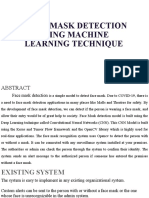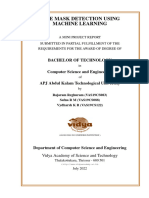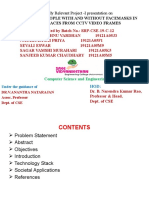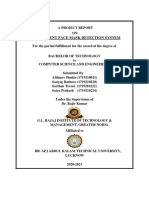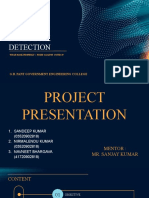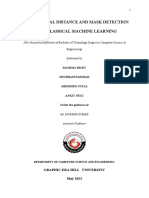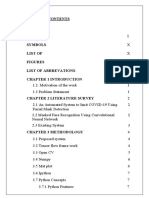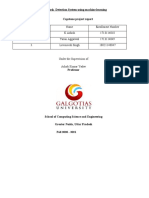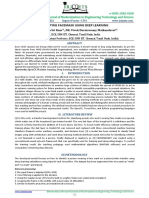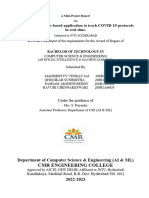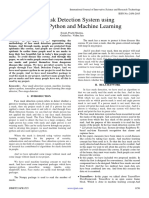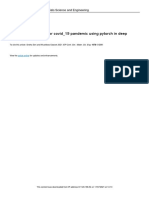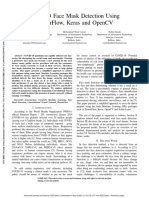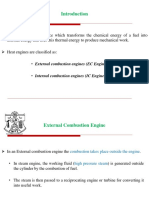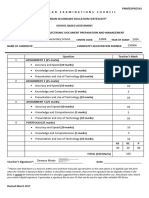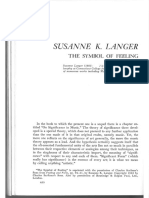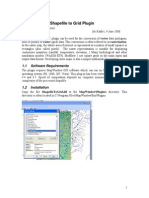0% found this document useful (0 votes)
24 views8 pagesFace Mask Detection Mini Project Report Updated
The document presents a mini project report on a real-time face mask detection system using deep learning, specifically Convolutional Neural Networks (CNNs) with OpenCV and TensorFlow. It highlights the importance of this technology for public health monitoring during the COVID-19 pandemic, detailing the processes of face detection, mask classification, and real-time processing. The project aims to automate surveillance in public areas to ensure compliance with face mask regulations.
Uploaded by
vinodyadavsr18Copyright
© © All Rights Reserved
We take content rights seriously. If you suspect this is your content, claim it here.
Available Formats
Download as DOCX, PDF, TXT or read online on Scribd
0% found this document useful (0 votes)
24 views8 pagesFace Mask Detection Mini Project Report Updated
The document presents a mini project report on a real-time face mask detection system using deep learning, specifically Convolutional Neural Networks (CNNs) with OpenCV and TensorFlow. It highlights the importance of this technology for public health monitoring during the COVID-19 pandemic, detailing the processes of face detection, mask classification, and real-time processing. The project aims to automate surveillance in public areas to ensure compliance with face mask regulations.
Uploaded by
vinodyadavsr18Copyright
© © All Rights Reserved
We take content rights seriously. If you suspect this is your content, claim it here.
Available Formats
Download as DOCX, PDF, TXT or read online on Scribd
/ 8




